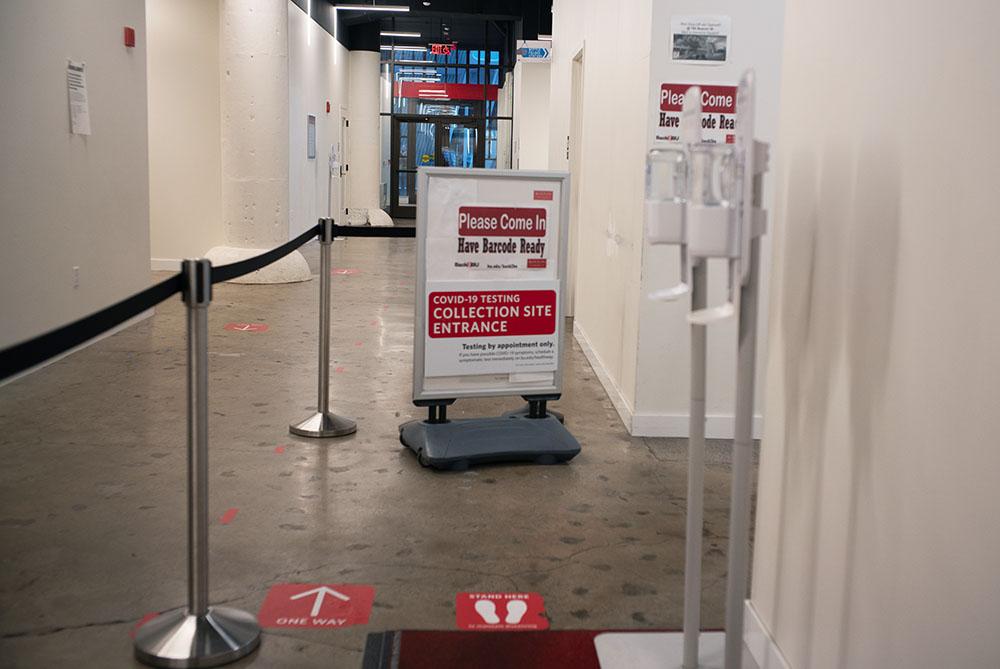Domestic violence has soared across the country in recent months now that more households have been confined to the same living space for long periods of time.

Boston University’s Center for Gender, Sexuality, and Activism and its Sexual Assault Response and Prevention Center hosted a panel Thursday featuring professors and sexual assault experts who spoke about the growing prevalence of domestic abuse during the pandemic.
“Domestic Violence during COVID-19” was the second part in a series of events to address topics regarding intimate partner violence.
SARP Director Nathan Brewer said SARP noticed an increase in the frequency and severity of intimate partner violence as a result of COVID-19. When communities began issuing stay-at-home rules, the number of calls rose from clients new and old, asking for support with dating violence.
Despite these growing numbers, Brewer said, early research shows domestic assault cases are not handled by authorities on the same scale. Police reports and arrests have been decreasing, he said.
“We’re expecting that that’s probably because people are afraid to go to the courthouse,” Brewer said. “They’re afraid to go to the police station or the emergency room, for risk of exposure to COVID.”
Diana Mancera is the director of membership and programs at Jane Doe Inc., a sexual assault survivor advocacy group. During the panel, Mancera said much of this uptick in reported violence is due to government- and self-enforced quarantine measures, because victims are trapped in the same space as their abusers for longer periods of time.
She also said an early fear of visiting hospitals during the pandemic has made it difficult for victims to leave their homes to seek treatment for their injuries or other resources from the outside world, increasing their health risks from violence experienced at home.
“Everybody [was] afraid of going to hospitals because they could potentially get sick,” Mancera said. “So if that was potentially a path for a lot of folks to get support around the harm that they were getting at home, they no longer have that entry point anymore.”
Panelist Xavier Guadalupe-Diaz, an associate professor of sociology at Framingham State University, said in an interview additional stressors from the pandemic, such as financial concerns, have worsened already-adverse mental health outcomes from domestic violence.
In analyzing domestic assault victims, Guadalupe-Diaz said experts typically look for post-traumatic stress disorder, substance abuse, anxiety and depression.
Victims who experienced abuse before the pandemic are likely to experience PTSD from a fear of being abused again, said Nafisa Halim, a research assistant professor at BU’s School of Public Health.
“It’s very possible that a fear of violence and the stress created by COVID in general is what’s taking a toll in the mental health of the survivors,” Halim said in an interview.
When it comes to specific communities experiencing abuse, Guadalupe-Diaz said the severity of abuse is particularly concerning for the LGBTQ community, because isolation with abusers makes manipulation easier.
“Queer and transgender people pre-pandemic were already more isolated from potential family members and friends,” Guadalupe-Diaz said. “Queer and trans people were disproportionately affected by economic hardships, because they’re overrepresented in sectors of the economy that are closed or locked down or in some way severely impacted, and so I’m thinking those stressors might be disproportionate as well.”
Thirteen percent of the general population lost jobs due to the pandemic in April and May, but in the LGBTQ community, 17 percent were out of work at the same time, according to a report by The Human Rights Campaign.
In analyzing these statistics and finding patterns, Mancera said, socioeconomic and technological disparities exacerbated by COVID-19 have also created challenges in collecting data on domestic violence.
“It may further marginalize certain communities that do not have access to technology,” Mancera said.
To adjust to these limitations in providing support, Mancera said health professionals and hotline workers have had to turn to more creative ways to help domestic abuse victims, such as educating nurses about IPV through telehealth training sessions.
“In the past, we never thought that it was possible to provide services to someone without having them face to face,” Mancera said in an interview. “And now we’ve been doing that.”
For college students and universities discussing the issue, Guadalupe-Diaz said increasing awareness is key: often, domestic violence is considered a problem only for families and long-term couples.
He said sparking those conversations will help students be more conscious of their relationships with those around them and become more knowledgeable about how and where to look for help.
“It’s helpful to hear from people to help us make sense of what we’re all going through and how we might all be impacted,” Guadalupe-Diaz said. “Sometimes it takes hearing about these realities to identify our own problems or identify our own lived realities.”






























































































































Diana Mancera • Nov 16, 2020 at 10:05 am
Thanks to CGSA & SARP for hosting this panel and exploring how COVID 19 has impacted people experiencing sexual and domestic violence. We want to make sure everyone knows that sexual and domestic violence programs have always been open and remain available. As we brace for another surge of COVID19 cases and people may again find themselves quarantined and isolated. If anyone reading this article needs support or wants to talk to someone about sexual abuse or domestic violence for themselves or someone they know, please know that there are free and confidential services available to you on the BU campus or in the community. Find more on these websites: https://janedoe.org/findhelp and http://www.bu.edu/shs/sarp/.